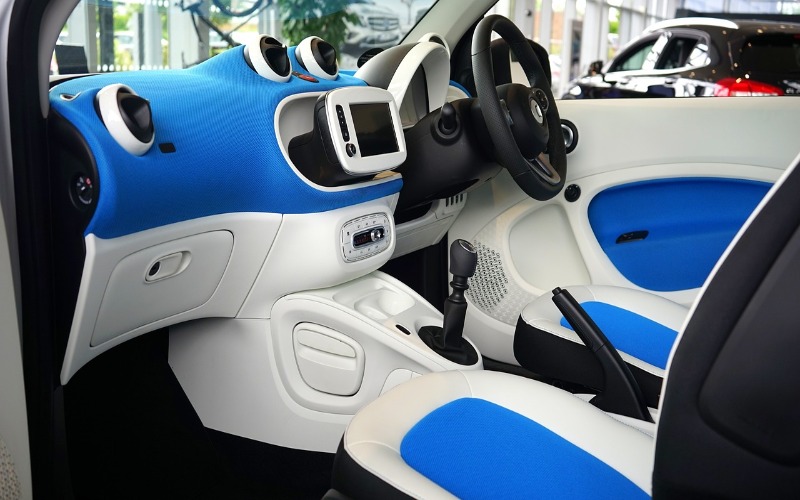The way we travel is just one of the numerous ways technology transforms our hectic, fast-paced lives. The most notable development of late has been the rise of “networked cars,” or automobiles connected to the internet and other electronic gadgets. This transformation is driven by the prospect of 5G connections, which might have a substantial and hitherto inconceivable impact on transportation.
Understanding Connected Cars
Smart cars, also known as connected cars, are vehicles with an ample array of sensor elements and networking peripherals combined with internet connectivity. Consequently, these vehicles can interact with external networks, infrastructure, and each other. This enables them to use different kinds of gadgets to minimize the amount of time spent on the road as well as the number of road accidents. Such innovations are on display at places like https://abetter.bid/locations/usa/ca.
The Role of 5G Technologies
The development of tomorrow’s automobiles is expected to be greatly aided by the fifth generation (5G) of cellular networks. Compared to earlier iterations, 5G promises significantly faster data transfer rates, lower latency, and greater capacity. These unique characteristics play a key role in helping IoT applications rise to the top. These applications support a variety of usage cases, including real-time data processing and communication-based tasks like autonomous driving, traffic management, and vehicle-to-vehicle (V2V) communication. The following statistics show how 5G technology is developing:
1. Worldwide Subscriptions to 5G
According to the Ericsson Mobility Report, over 1 billion 5G subscribers were in place worldwide by the end of 2021, demonstrating the technology’s rapid uptake.
2. 5G Infrastructure Investments
GSMA Intelligence data indicates that between 2020 and 2025, mobile operators want to invest $1 trillion in constructing 5G infrastructure. This amounts to a substantial financial outlay for the deployment and growth of 5G networks.
3. Automotive Industry Adoption
Several manufacturers, including Ford, GM, and BMW, announced plans to incorporate 5G technology into their vehicles. By 2025, over 75 million automobiles should have 5G installed, according to ABI Research.
4. 5G Spectrum Auctions
Governments have been allocating frequencies for 5G networks through spectrum auctions globally. For instance, to fund the implementation of 5G in 2020, the Federal Communications Commission (FCC) in the US collected more than $80 billion through spectrum auctions.
5. Business Impact
A study by Qualcomm suggests that by 2035, 5G technology could sustain up to $13.2 trillion in worldwide economic activity, greatly improving connection, efficiency, and innovation across a range of industries, including transportation.
Boosting Effectiveness and Security
Enhancing efficiency and safety on the road is the most alluring advantage of 5G-enabled linked cars. Cars can communicate with each other concerning position, speed, and trajectory thanks to 5G-enabled V2V connections. This allows cars to predict possible road dangers and skillfully respond to them. With fewer accidents and gridlock, commuters may be able to save lives and valuable time thanks to this potential.
Autonomous Driving Enabled
The ultimate in linked automobile technology is represented by autonomous or self-driving cars, and 5G is crucial to bringing this vision to life. Because 5G networks have extremely low latency, vital information can be analyzed and sent instantly, enabling autonomous cars to make snap judgments in challenging driving situations. Furthermore, real-time updates and high-definition mapping made possible by 5G improve the precision and dependability of autonomous navigation systems even further.
Changing the Traveler Experience
5G-connected vehicles have the potential to completely transform the passenger experience in addition to increasing efficiency and safety. During their trip, passengers may effortlessly access entertainment, work tools, and immersive experiences thanks to the onboard high-speed internet service. The car may be used as a mobile entertainment and communication center for many purposes, such as making video calls, streaming HD material, and accessing individualized services.
Overcoming Obstacles and Taking Into Account
Despite the many difficulties and factors to be considered, there is no denying the potential advantages of 5G-connected automobiles. These include worries about data security and privacy, the need for strong legislative frameworks to enable the proper and secure implementation of connected car technology, and interoperability between various infrastructure providers and automakers.
The Path Ahead
The global deployment of 5G and the advancement of connected car technology suggest that transportation will become more automated, efficient, and linked in the future. Achieving this goal would involve cooperation and creativity from a range of parties, such as automakers, cellular providers, legislators, and customers. We can usher in a new era of transportation that is more sustainable, safe, and pleasurable for everybody by using 5G’s capabilities.
Conclusion
The development of linked automobiles enabled by 5G technology signifies a fundamental change in how we see and utilize transportation. The potential applications are numerous and profound, ranging from improving traffic safety and efficiency to allowing driverless vehicles and revolutionizing the traveler experience. To guarantee that connected automobiles fulfill the promise of a smarter, safer, and more connected world, we must prioritize cooperation, innovation, and responsible deployment as we move toward this future.











